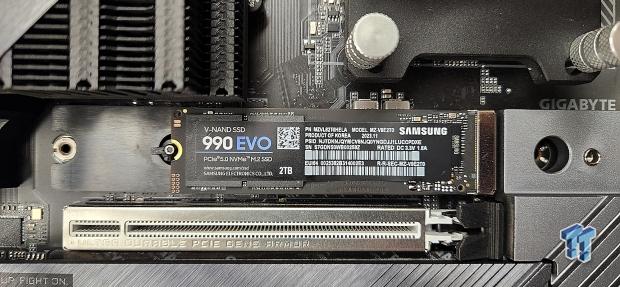
The Bottom Line
Pros
- + Gaming
- + Consumer workloads
- + Efficient
Cons
- - Current pricing
Should you buy it?
AvoidConsiderShortlistBuyIntroduction & Drive Details
For one year, the only retail consumer PCIe Gen5 storage game in town has come in the form of Phison's E26-controlled offerings, the first of which being SSTC's TigerShark, we reviewed 11.5 months ago. From March 3rd, 2023, until late last month, all we've seen on the PCIe Gen5 front are progressively faster iterations of Phison E26 flagship performance offerings.
Well, now we have another, Samsung's 990 EVO, which was unveiled at this year's CES and is now available through retail channels. Samsung's first retail PCIe Gen5 SSD is not what we expected would be its first offering. Instead of challenging Phison's E26 for the performance crown, as expected, Samsung's 990 EVO is instead something else entirely.
Samsung's 990 EVO is a two-lane DRAMless Gen5 SSD targeted at mainstream PCs and high-end mobile upgrades. As we see it, a rather surprising way to jump on the PCIe Gen5 storage train. Our experience to this point with DRAMless SSDs is that they are marketed as a low-cost entry point for mainstream storage upgrades and are typically priced accordingly. The 990 EVO, not so much, at least not yet, as current street pricing is equal to that of Samsung's own and more performant 990 PRO.
Apparently, the 990 EVO's intended appeal is to its PCIe Gen5 interface and 70% lower power consumption with 43% more performance than its predecessor, the 970 EVO Plus, as indicated by Samsung's January 23rd press release, which states: "The 990 EVO delivers a hybrid storage solution that lets you easily bring flexibility and future proof your setup," said Jose Hernandez, Senior Director of Memory Product Marketing at Samsung. "These drives balance performance, power efficiency and reliability, making them a versatile choice for the latest interface, and great for a variety of everyday tasks, like gaming, working, editing and more."
Okay, good enough, as there is clearly a valid case to be made for this line of reasoning. With this in mind and our full expectation that street pricing will eventually end up significantly lower than the 990 PRO, let's set aside pricing and get into what the 990 EVO can do for you on the performance front with a clear focus on user experience or performance that matters.
Drive Details
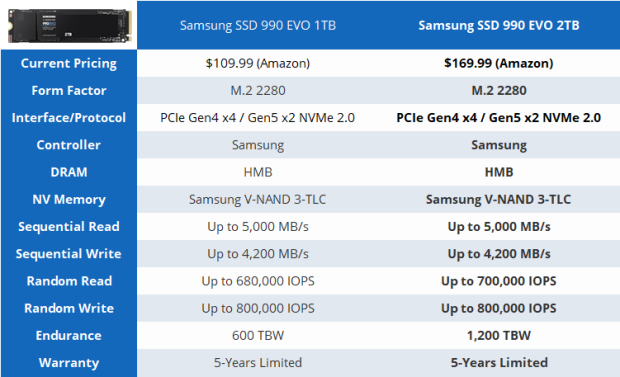
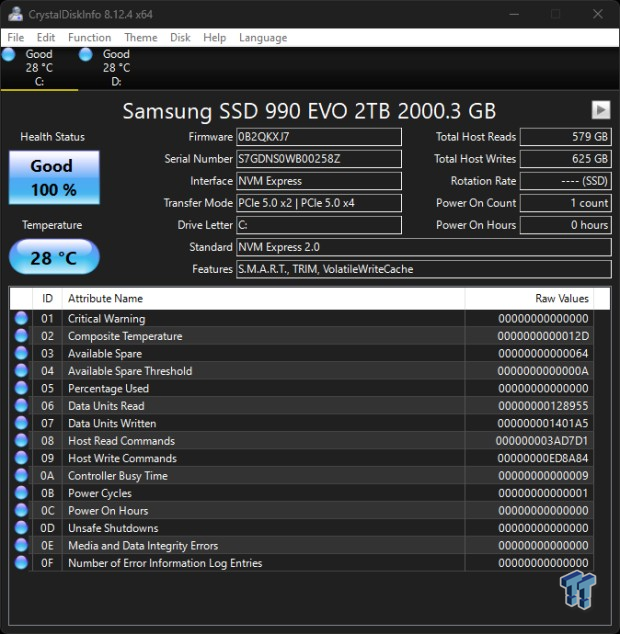
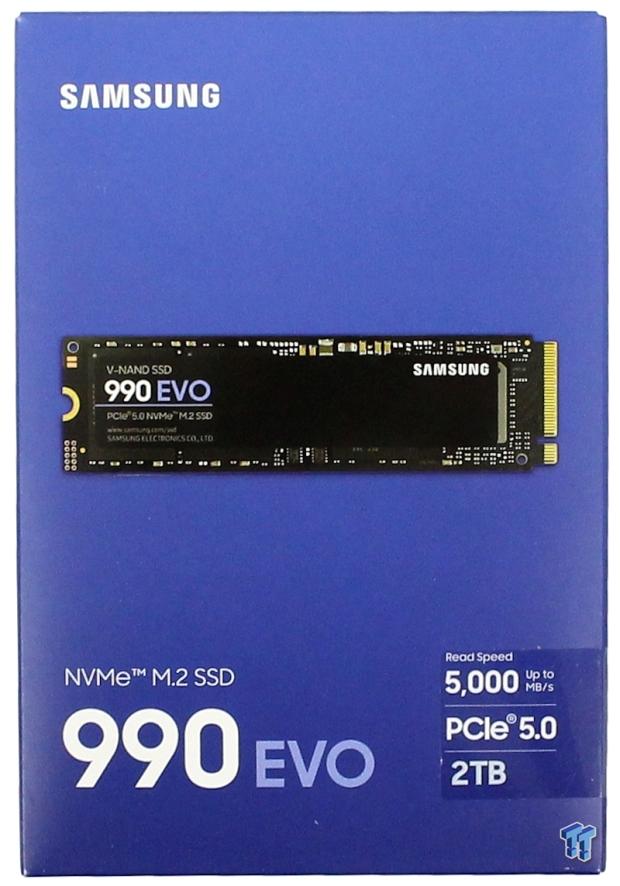
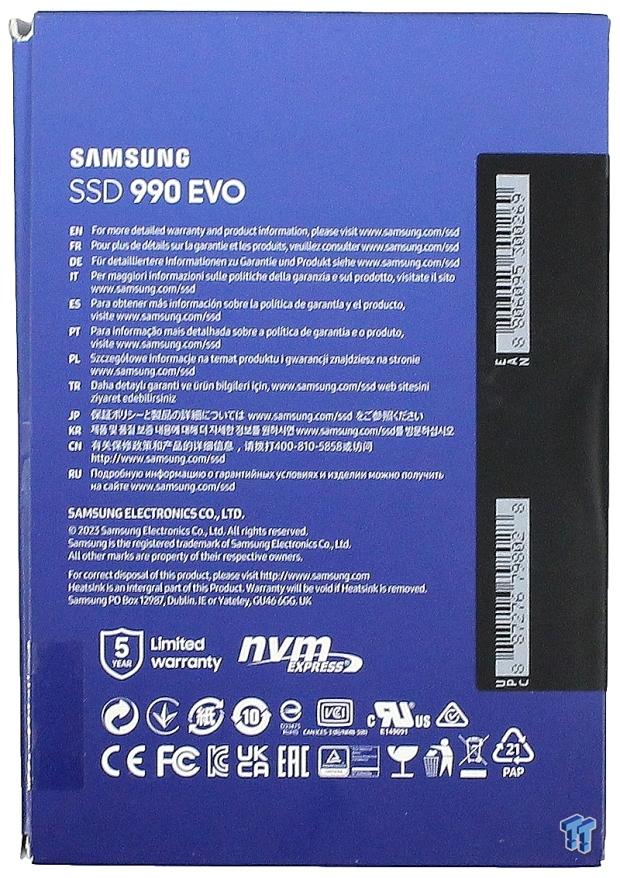


As always, when you buy a Samsung SSD, you get free supporting software that makes maintenance and system migration simple and free. Click HERE to download it.
Jon's Test System Specifications
Intel Test System
- Motherboard: GIGABYTE AORUS Z790 Xtreme X
- CPU: Intel Core i9-14900K - Buy from Amazon
- Cooler: Alphacool Eissturm Hurricane Copper 45 - Buy from Amazon
- RAM: Patriot Viper Xtreme 5 8000 48GB - Buy from Amazon
- Graphics Card: MSI SUPRIM X RTX 3080 12GB - Buy from Amazon
- Case: PrimoChill's Praxis Wetbench - Buy from Amazon
- Power Supply: be quiet! Dark Power Pro 12 1200W - Buy from Amazon
- OS: Microsoft Windows 11 Pro 64-bit - Buy from Amazon
AMD Test System
- Motherboard: GIGABYTE X670E AORUS Master
- CPU: AMD Ryzen 9 7950X - Buy from Amazon
- Cooler: Alphacool Eissturm Hurricane Copper 45 - Buy from Amazon
- RAM: Sabrent Rocket DDR5 32GB - Buy from Amazon
- Graphics Card: MSI SUPRIM X RTX 3080 12GB - Buy from Amazon
- Case: PrimoChill's Praxis Wetbench - Buy from Amazon
- Power Supply: be quiet! Dark Power Pro 12 1200W - Buy from Amazon
- OS: Microsoft Windows 11 Pro 64-bit - Buy from Amazon
Because we at TweakTown like to be first at everything whenever we can, we will present our storage performance results for the test subject on both 14th Gen Intel and 7000 Series AMD platforms going forward for the foreseeable future. Because Intel still delivers the best real-world storage performance, (Look Here), our running chart will continue to be Intel-based until AMD can deliver better real-world storage performance than its rival.

Synthetic Benchmarks: CDM, Anvil, ATTO
CrystalDiskMark
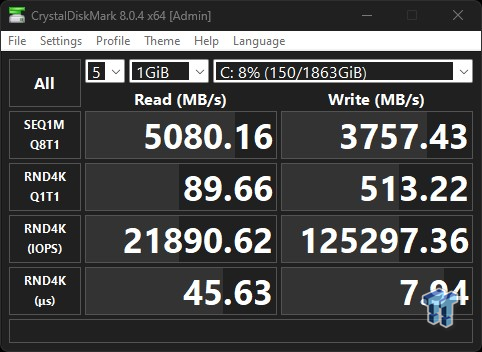
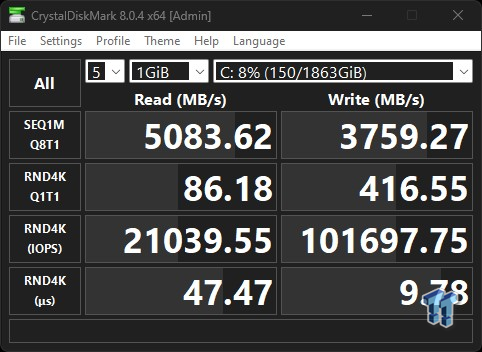
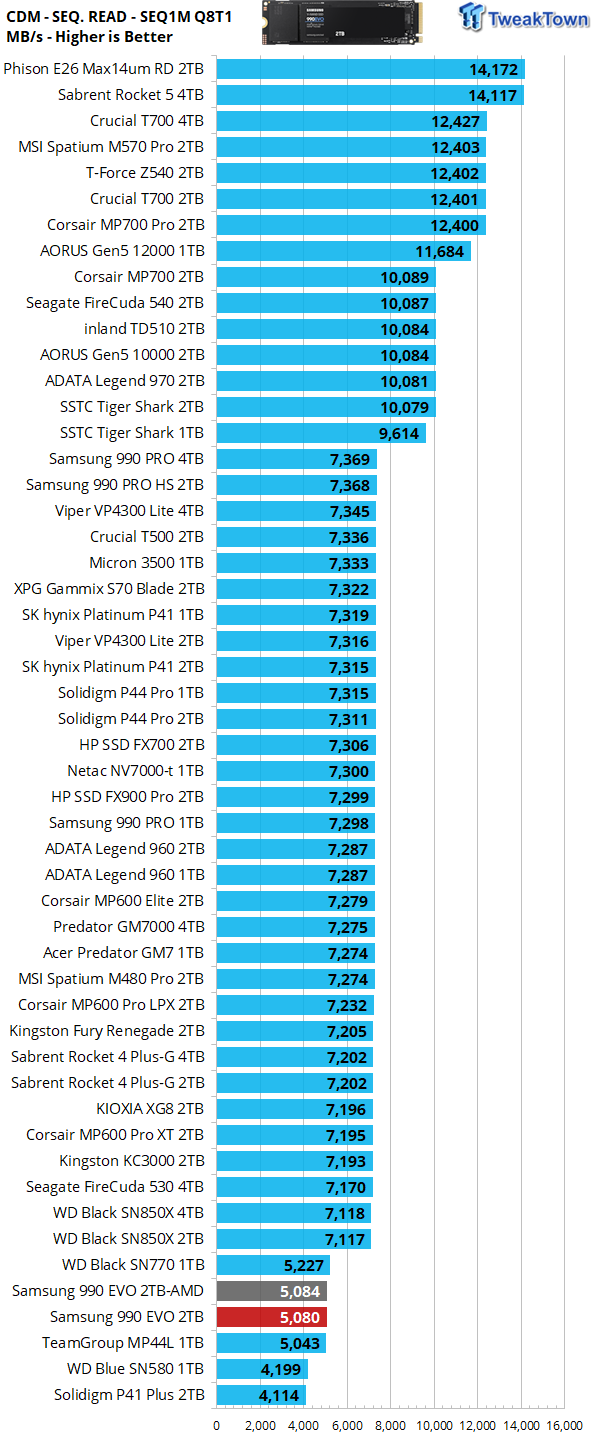
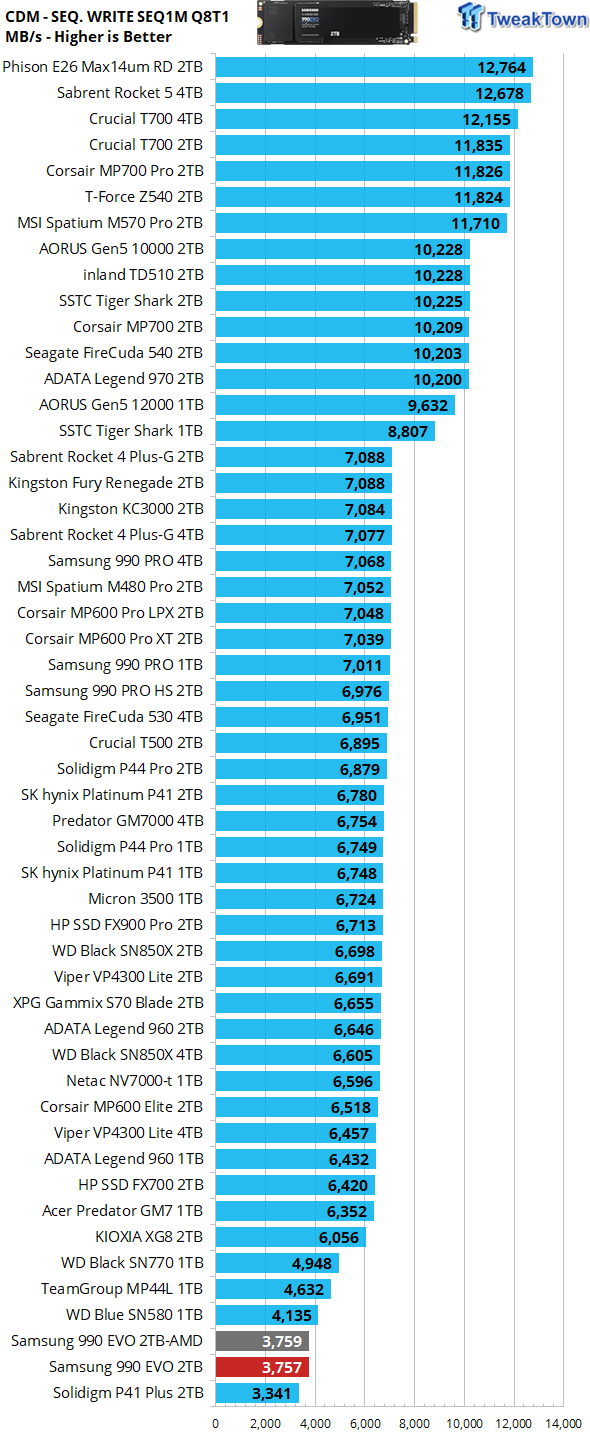
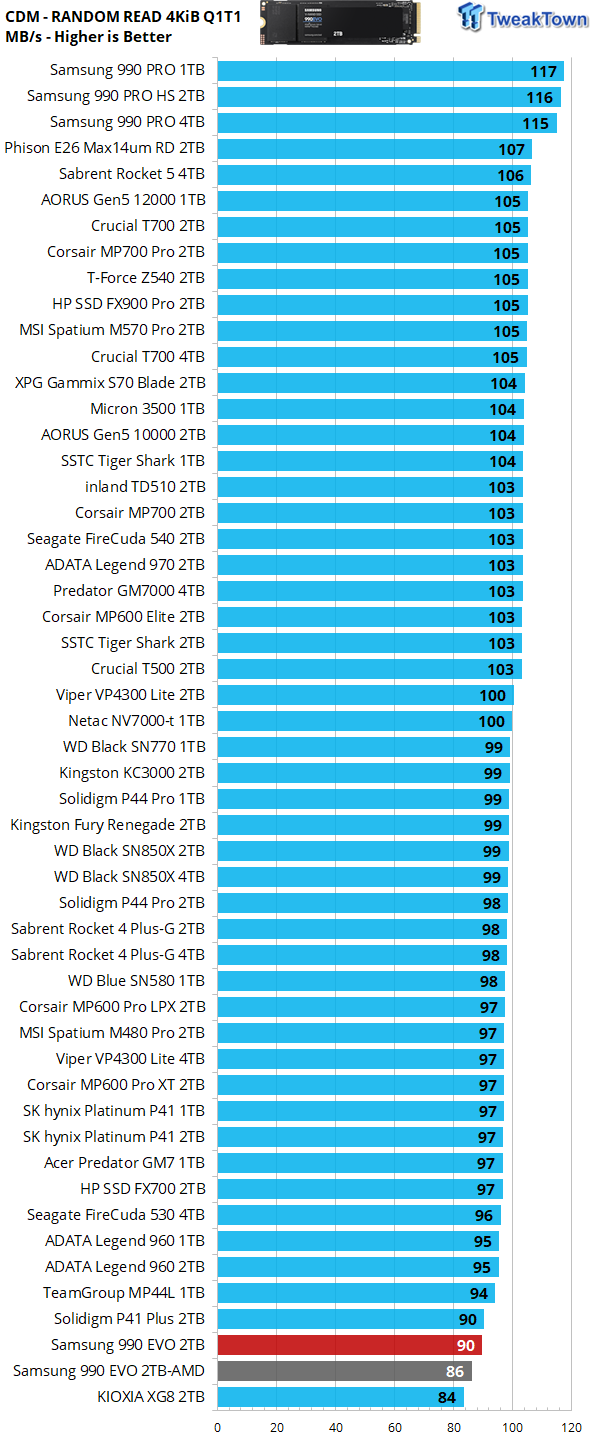
We employ CDM as our standard measurement for both sequential throughput and Q1T1 random read. In terms of sequential throughput, we find our test subject unable to attain its quoted up to 4,200 MB/s sequential write speed. We don't see this as much of a drawback, as sequential write isn't a very important performance metric. Sequential reads are spot-on at just over 5GB/s. Q1T1 random read is in line with what we would expect from a low-power DRAMless SSD.
Anvil's Storage Utilities
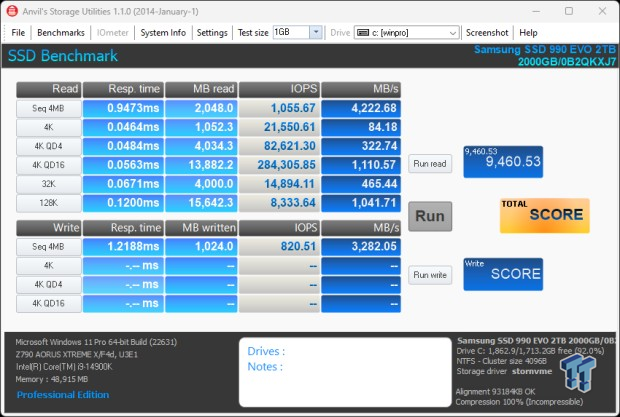
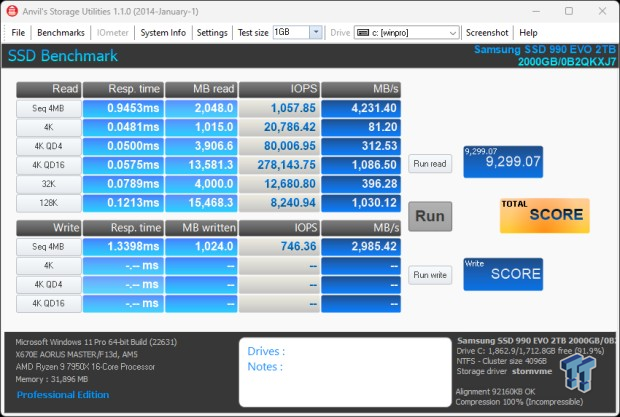
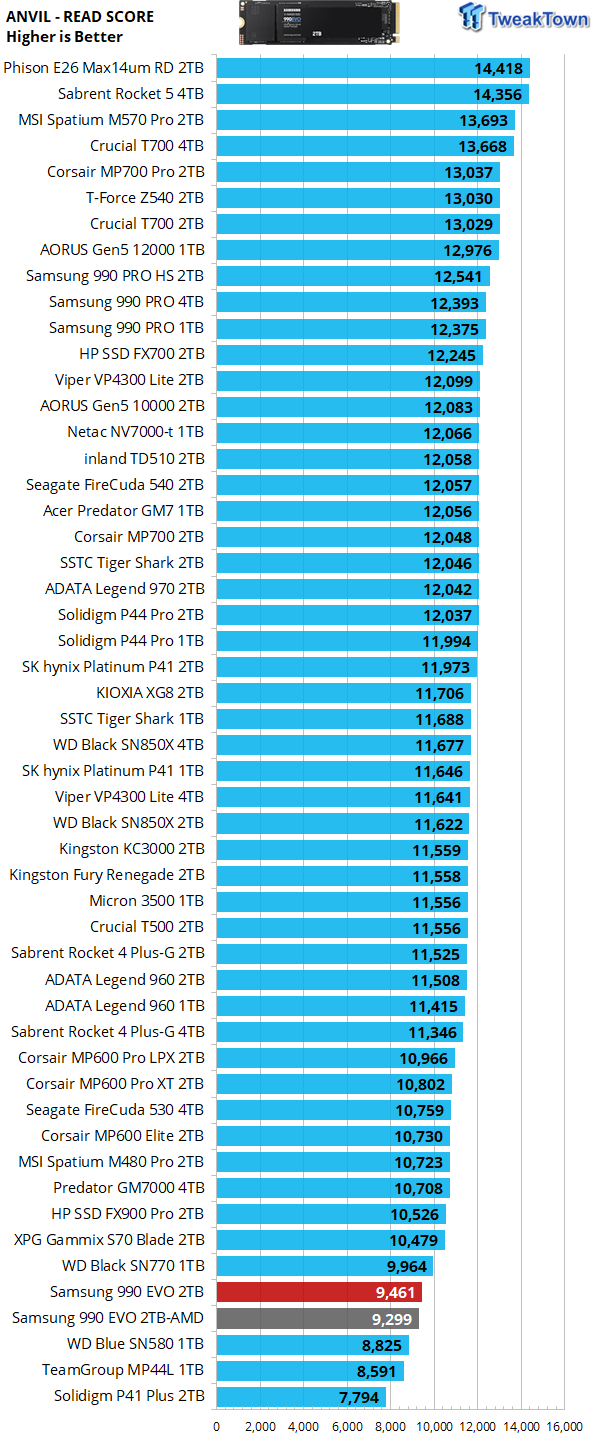
Except for Seq 4MB, which determines so much of the overall score here, everything else looks great, indicating that our test subject might have something exceptional in store for us when we get to our real-world simulations.
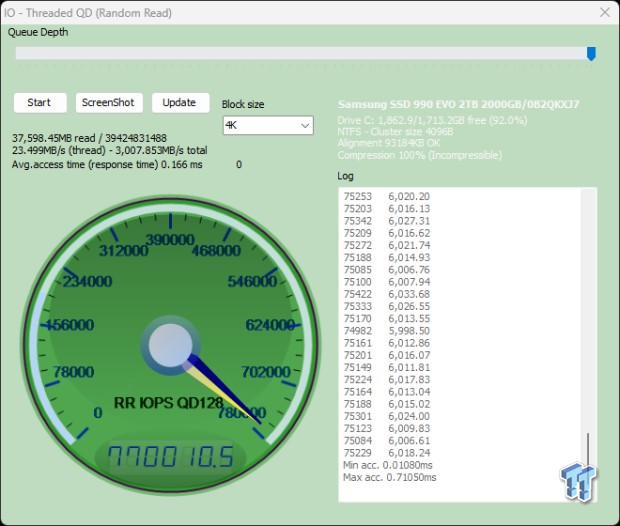
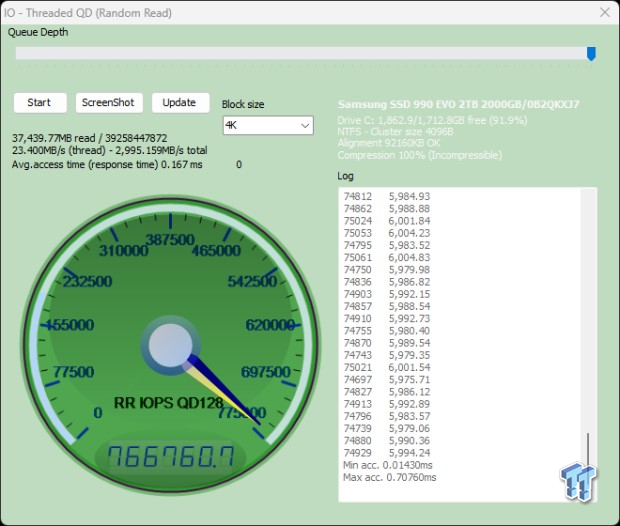
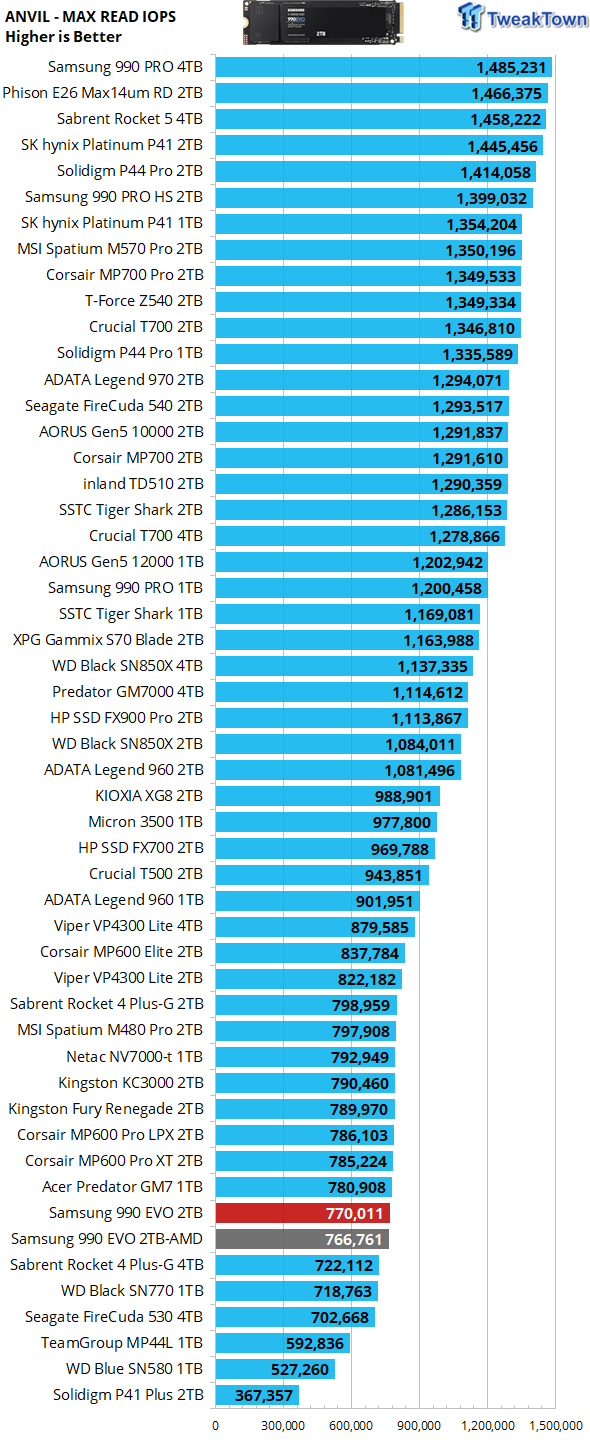
We employ Anvil's random read test as our standard for measuring max random read IOPS. This test is very accurate as it at its core is Iometer skinned over. We test at QD128. This is something we don't often see; max random read performance exceeds factory up to specs. Impressive.
ATTO
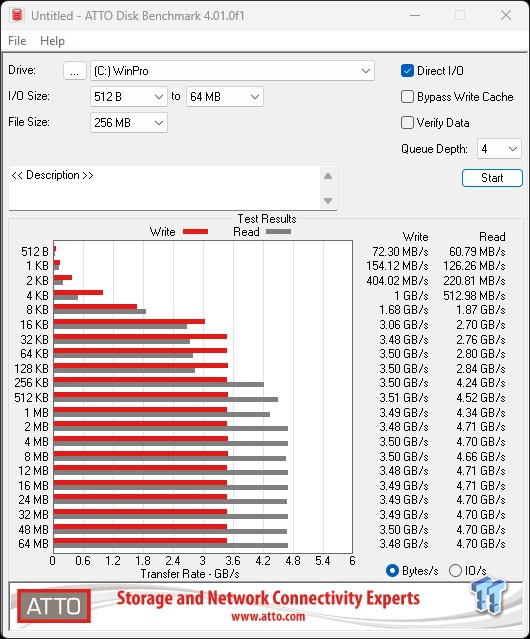
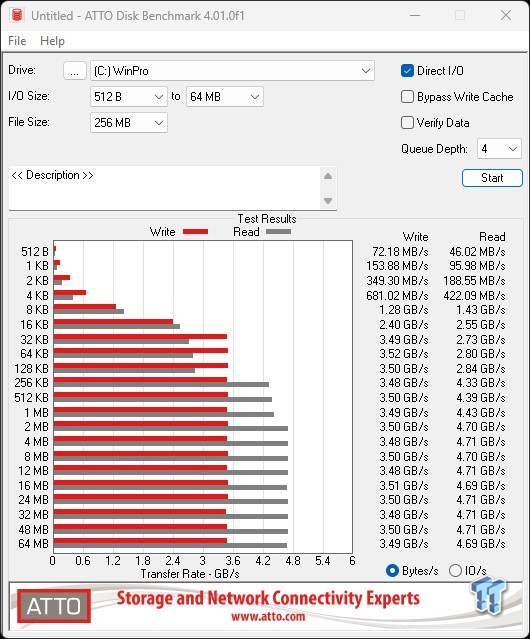
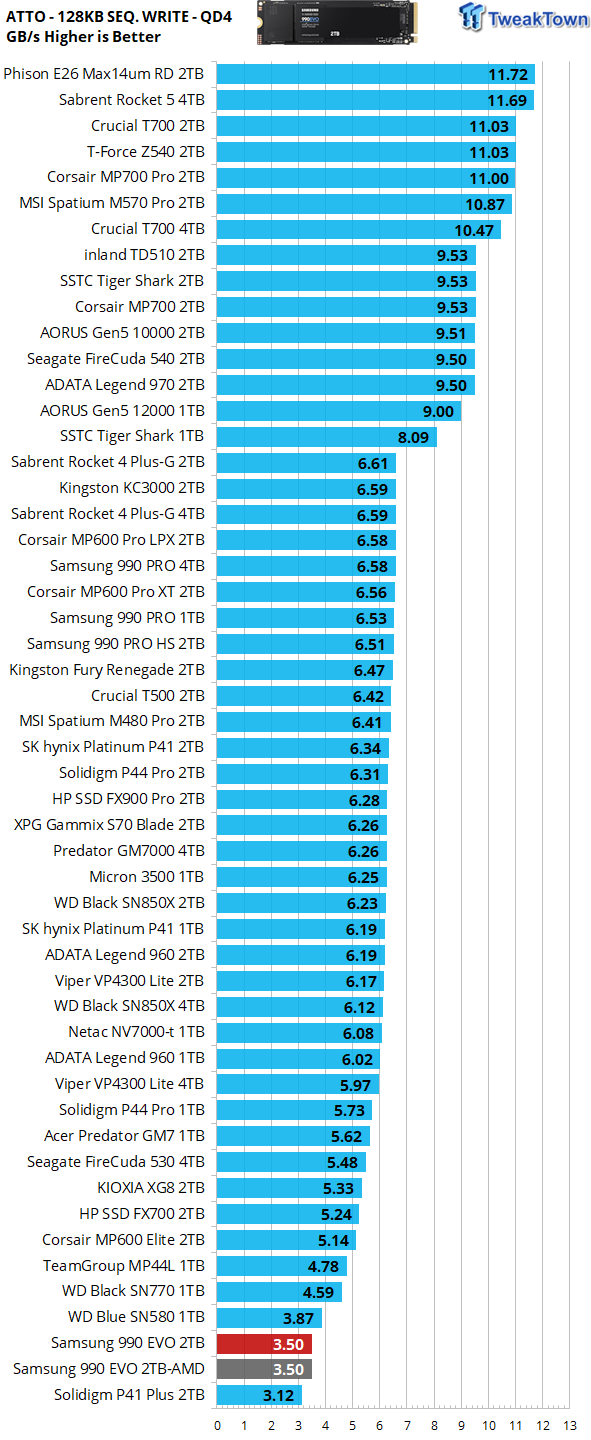
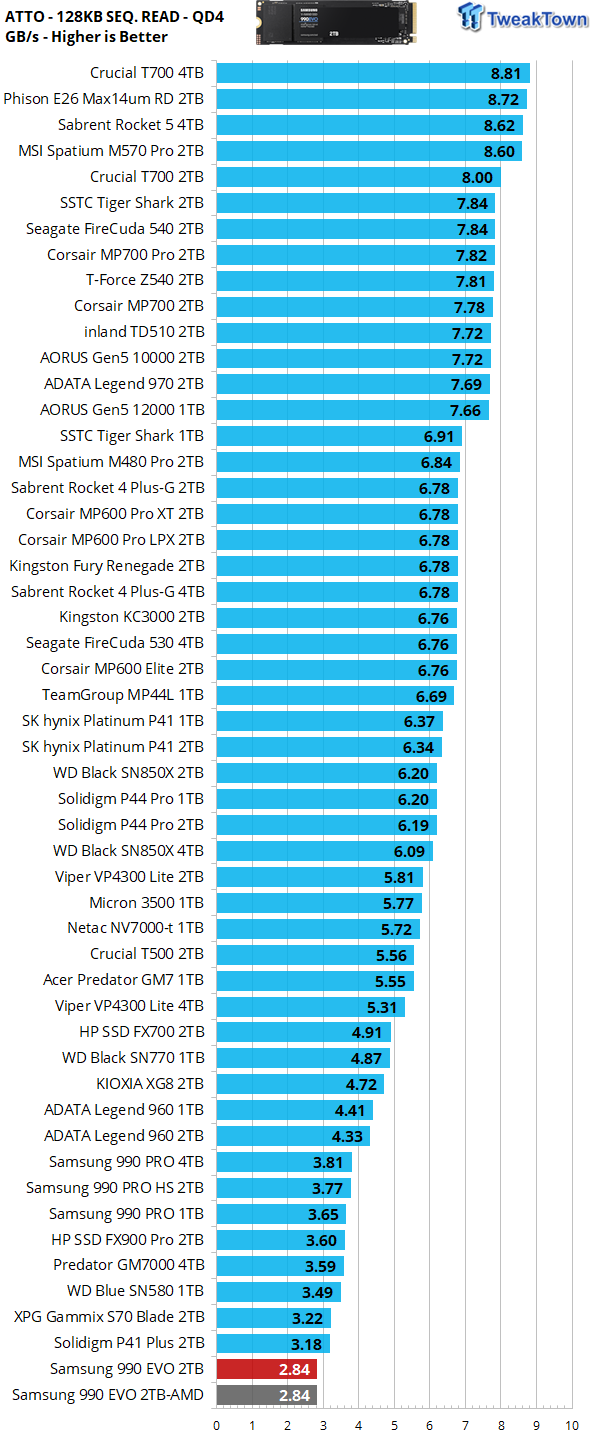
ATTO gives us a clear picture of what transfer sizes a particular SSD favors in terms of QD4 sequential throughput. We chart 128K transfers. At a queue depth of four, the 990 EVO favors sequential transfers of 2MB or larger when serving data to the host (reading) and 32K or larger when programming (writing) data.
Real-World Testing: Transfers, 3DMark SSD Gaming Test, PCM10 Storage
Transfer Rates
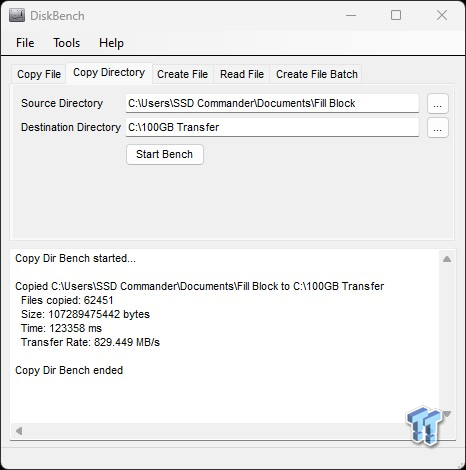
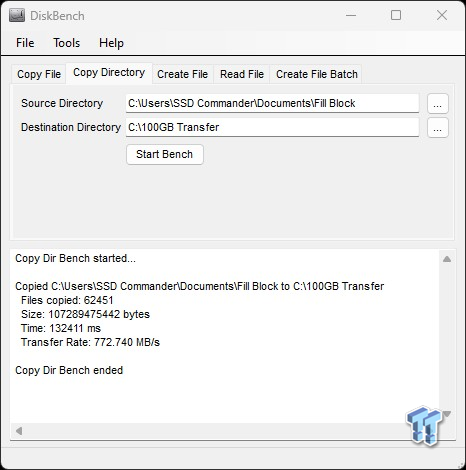
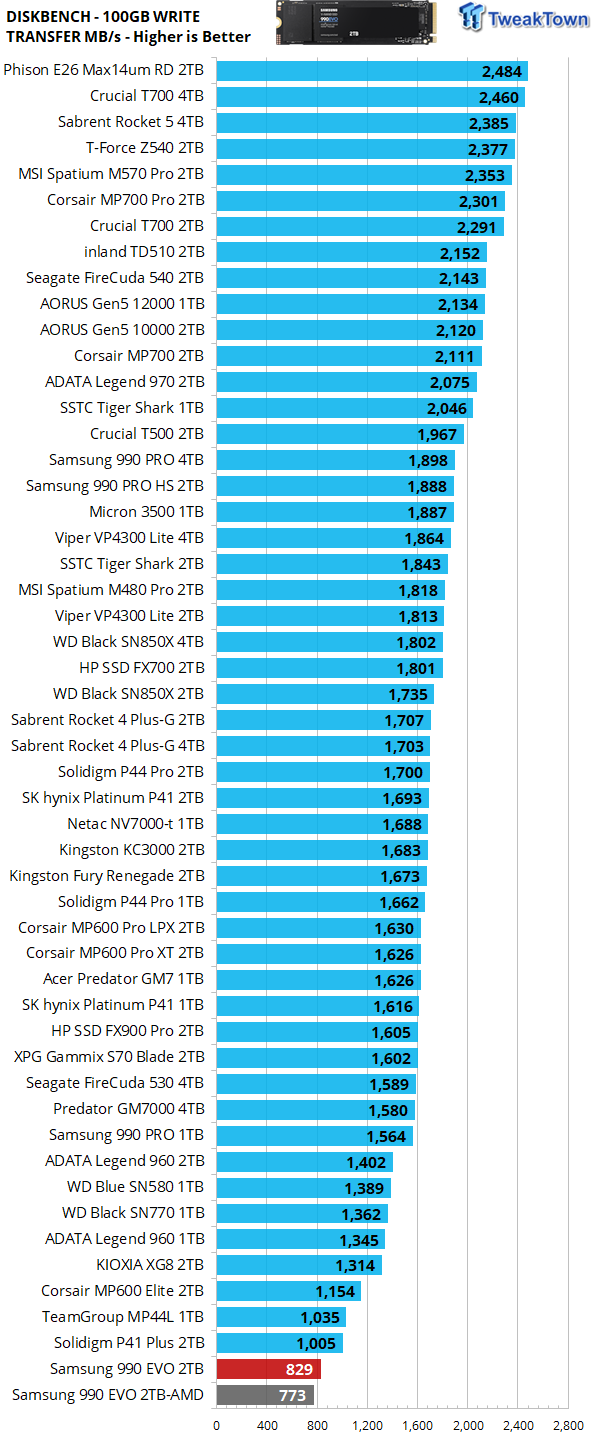
Our 100GB data transfer test is not your ordinary 100GB of data. Ours is a crushing mix composed of more than 62K files. Write performance, random or sequential, is an infrequent operation, and as such, we do not consider it to be an important performance metric in the consumer space. An example being how many times is a game installed vs. how many times it's played.
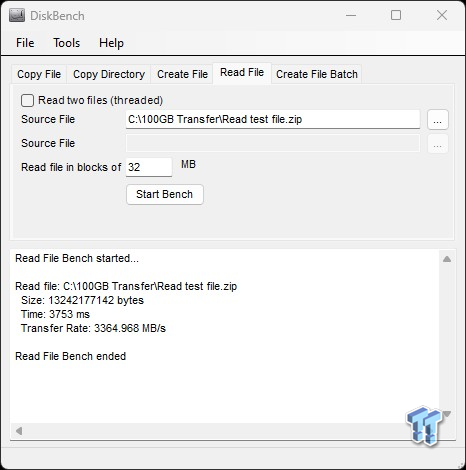
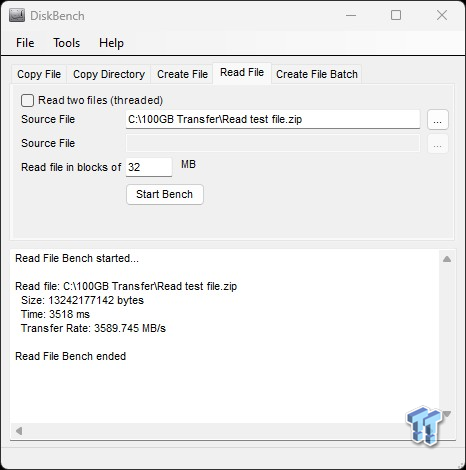
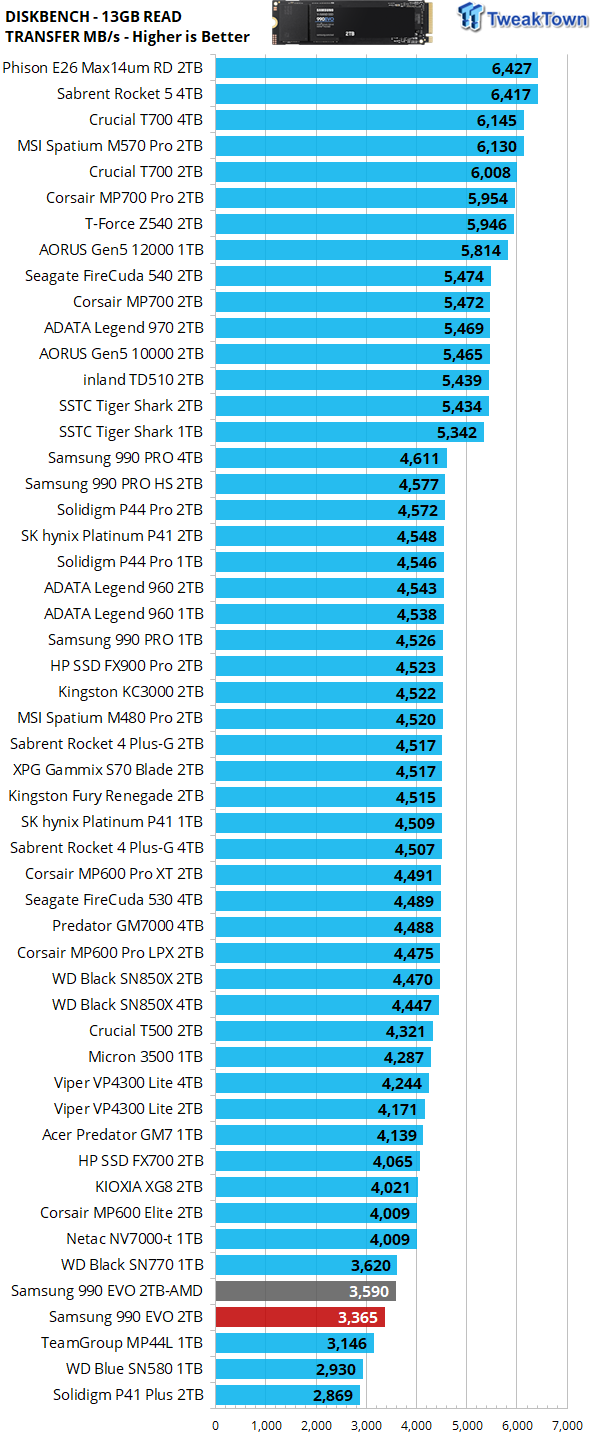
Unlike programming (writing) data, serving data to the host (reading) is always an important performance metric as it relates to the consumer space. Respectable numbers here, considering we are only working with two lanes.
3DMark SSD Gaming Test
UL's newest 3DMark SSD Gaming Test is the most comprehensive SSD gaming test ever devised. We consider it superior to testing against games themselves because, as a trace, it is much more consistent than variations that will occur between runs on the actual game itself. This test is the same as running the actual game, just without the inconsistencies inherent to application testing. In short, we believe that this is the world's best way to test an SSD's gaming prowess and accurately compare it against competing SSDs. The 3DMark SSD Gaming Test measures and scores the following:
- Loading Battlefield V from launch to the main menu.
- Loading Call of Duty Black Ops 4 from launch to the main menu.
- Loading Overwatch from launch to the main menu.
- Recording a 1080p gameplay video at 60 FPS with OBS (Open Broadcaster Software) while playing Overwatch.
- Installing The Outer Worlds from the Epic Games Launcher.
- Saving game progress in The Outer Worlds.
- Copying the Steam folder for Counter-Strike Global Offensive from an external SSD to the system drive.
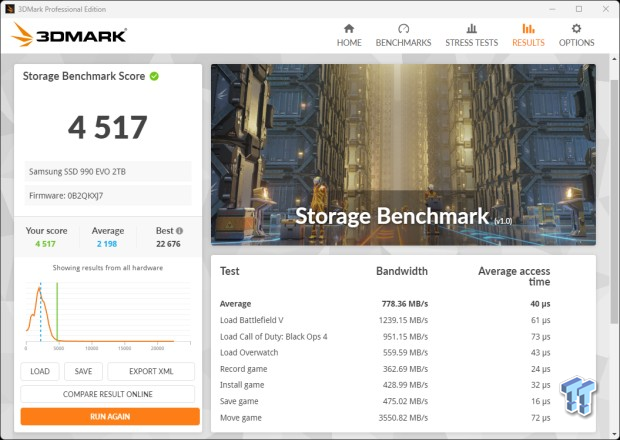
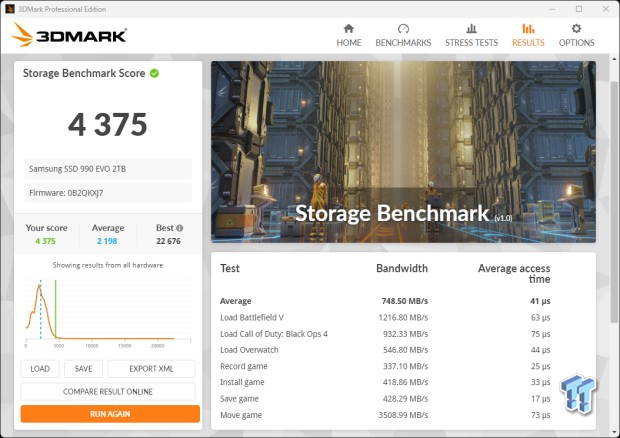
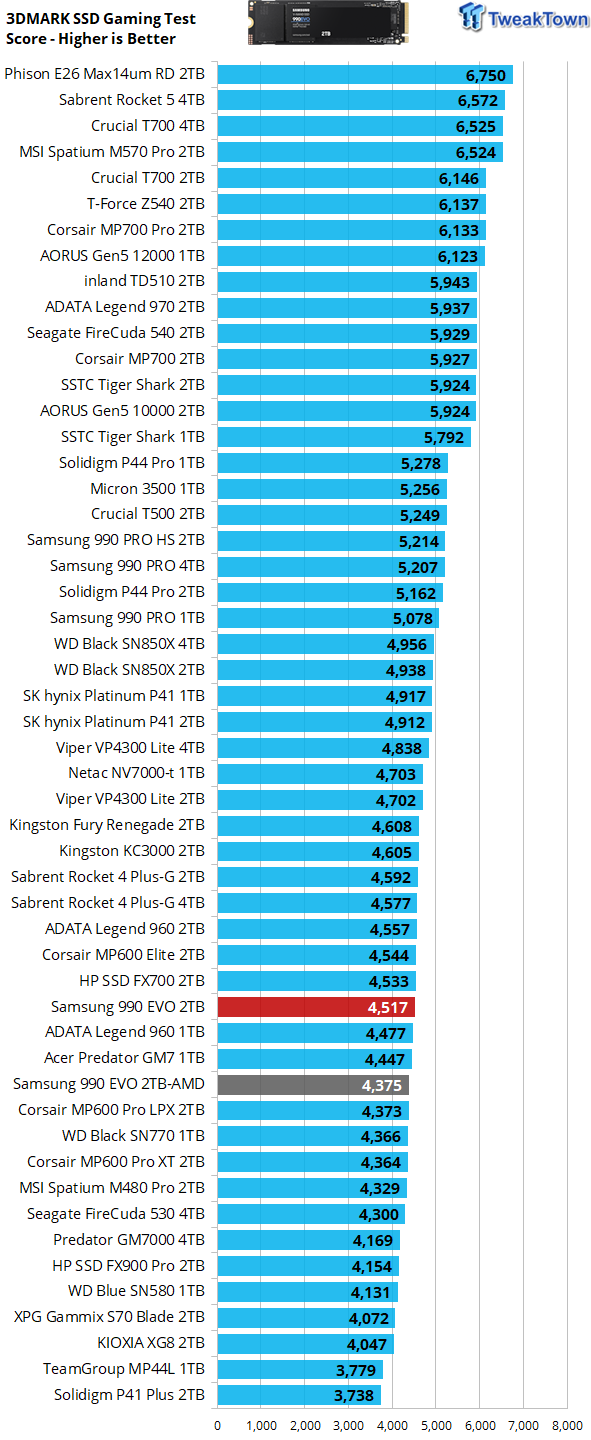
Gaming is a performance metric that matters to most DIY consumers, especially for the enthusiast crowd that TweakTown caters to. Now we've reached the point where results start to matter as they are a direct reflection of user experience. A score of 4,517 here indicates the 990 EVO is fully capable of executing gaming duties at a high level.
PCM10 Storage Tests
PCMark 10 Storage Test is the most advanced and most accurate real-world consumer storage test ever made. There are four different tests you can choose from; we run two of them. The Full System Drive Benchmark and the Quick System Drive Benchmark. The Full System Drive Benchmark writes 204 GB of data over the duration of the test. These tests directly correlate with mainstream user experience.
PCMark 10 Full System Drive Benchmark
This test writes 204GB data and covers a broad range of common consumer tasks, including booting Windows 10, file transfers, Adobe and Office applications, and startup times for games including Battlefield V, COD Black Ops 4, and Overwatch. Unlike synthetic numbers, this is comprehensive real-world data, which is why we use it to rank SSDs in terms of user experience.
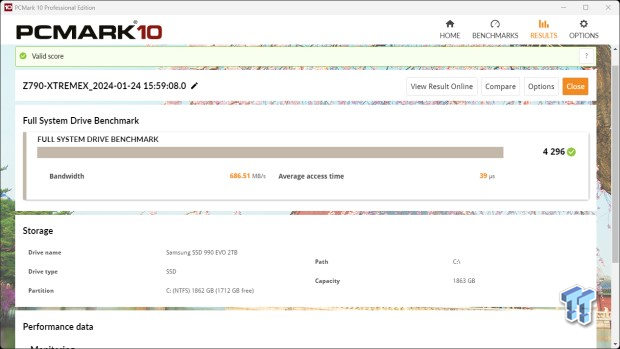
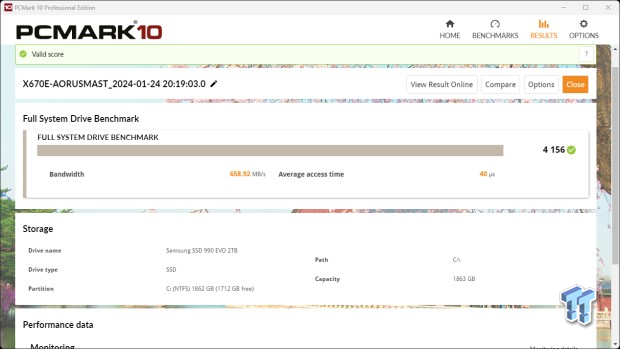
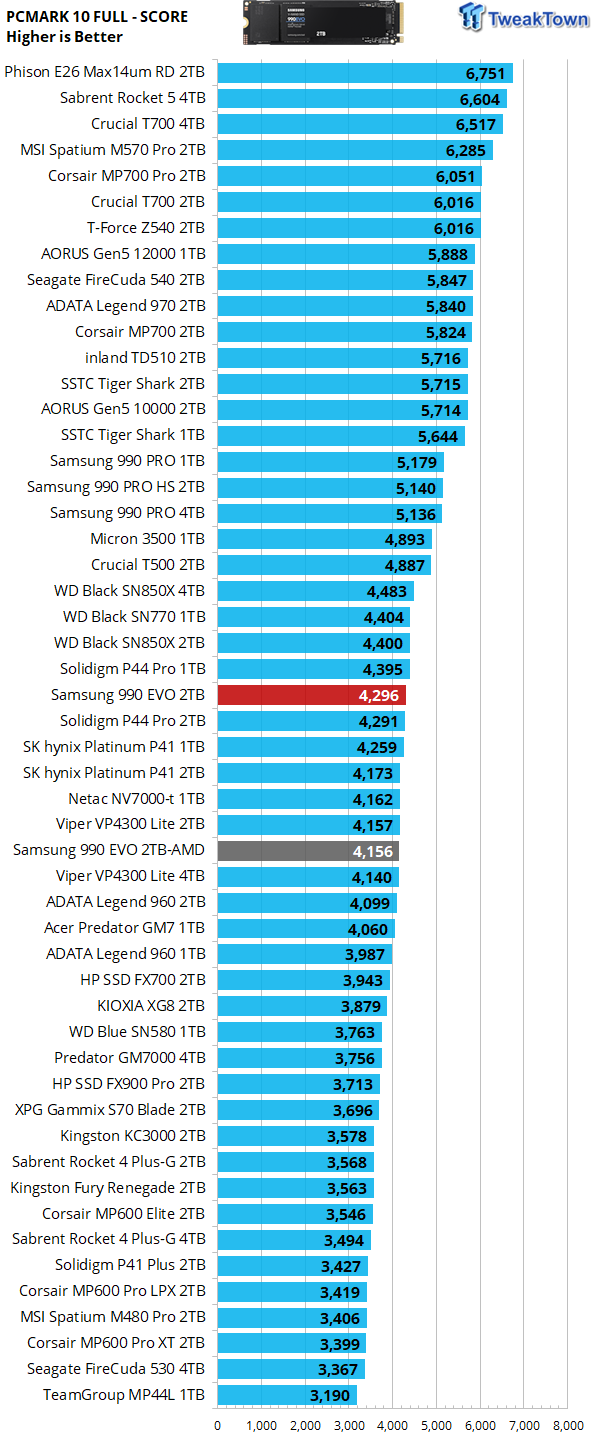
This is performance that matters as it is highly reflective of normal consumer data patterns. Our 2-lane power sipper delivers the second-highest score ever for a DRAMless SSD and the highest-ever score for a 2TB DRAMless SSD. Impressive.
PCMark 10 Quick System Drive Benchmark
The Quick System Drive Benchmark writes 23 GB of data over the duration of the test.
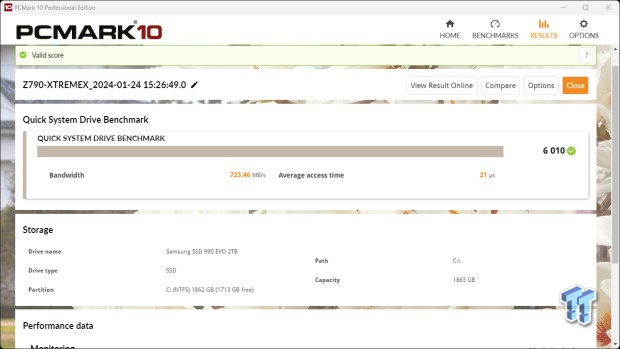
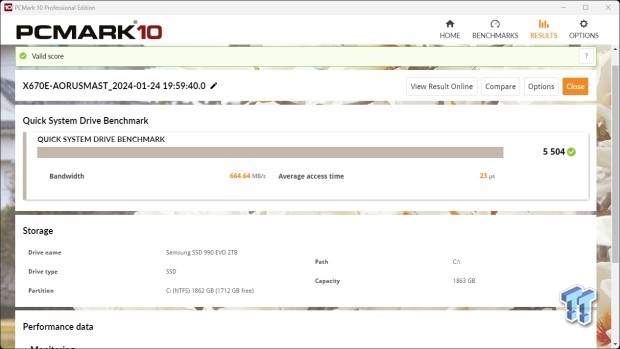
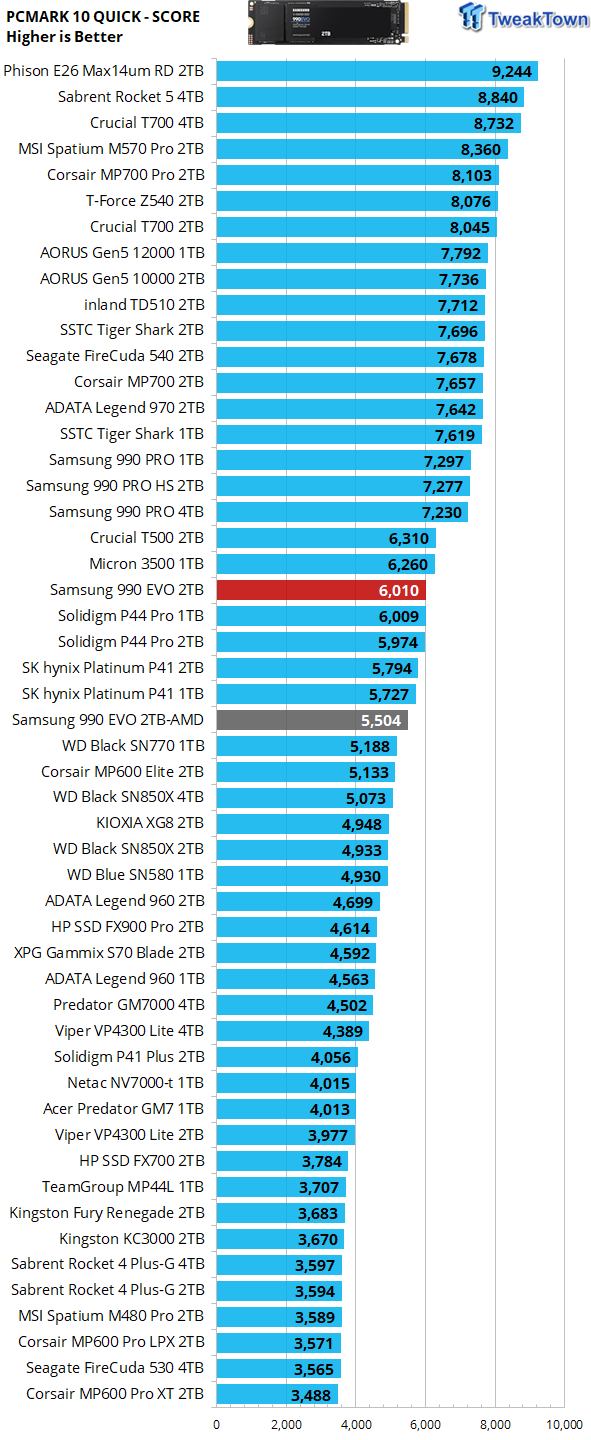
Of all the performance testing we do, this test is where we most of all want to see good numbers as it is most indicative of normal consumer usage patterns. A score of 6000+ here is a milestone that no flash-based DRAMless SSD has ever before attained. The most performance where it matters the most. You've got to love that.
Final Thoughts
If we set aside its current untenable pricing and just focus on what the 990 EVO 2TB brings to the table, it's easy to find a lot to like about the second PCIe Gen5 consumer SSD to make it to our test bench. First off, it's the highest-performing flash-based DRAMless SSD we've encountered to date. Being single-sided and PCIe Gen5 x2 or Gen4 x4 gives it an inherent level of futureproofing, which is also appreciated. Finally, it's extremely power efficient, consuming 70% less power than its immediate predecessor.
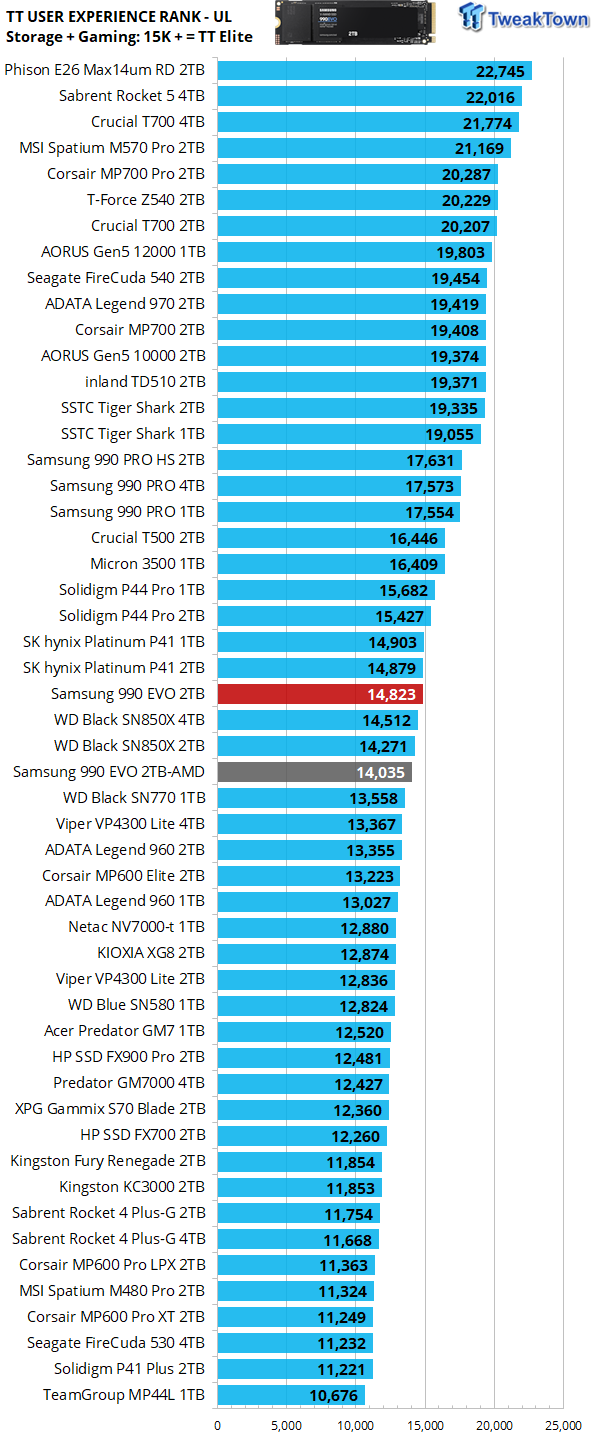
We rank SSDs in terms of overall user experience (performance where it matters most) as expressed by PCMark 10 storage and 3DMark gaming storage tests. Currently, we consider a user experience score of 15K or more to verify an SSD as a TweakTown Elite performer. A 2-lane DRAMless SSD right on the edge of being deemed 15K TT elite. Unprecedented.
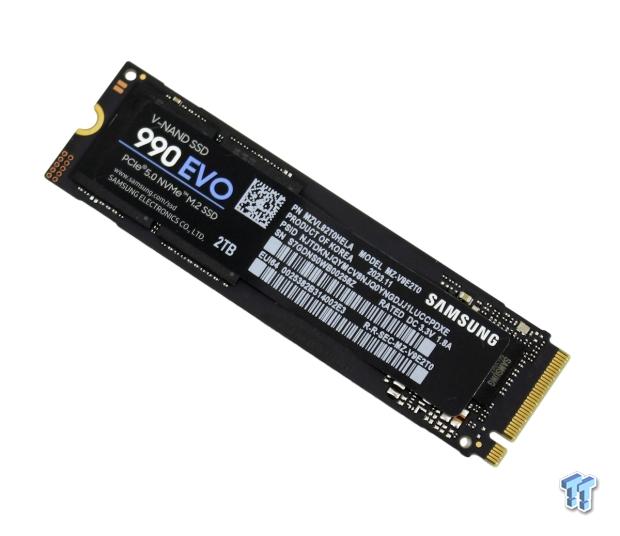
If you value high efficiency and an overall class-leading user experience, then Samsung's 990 EVO could be just what you've been looking for.

